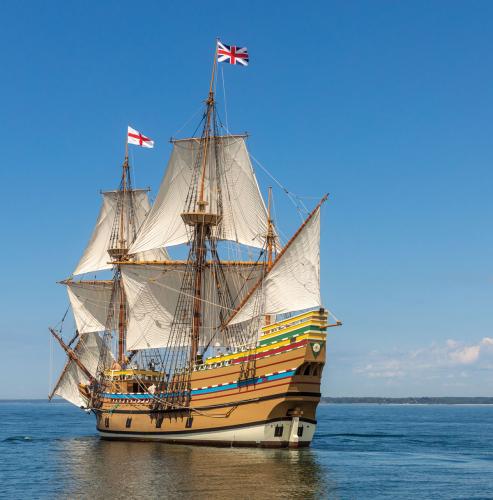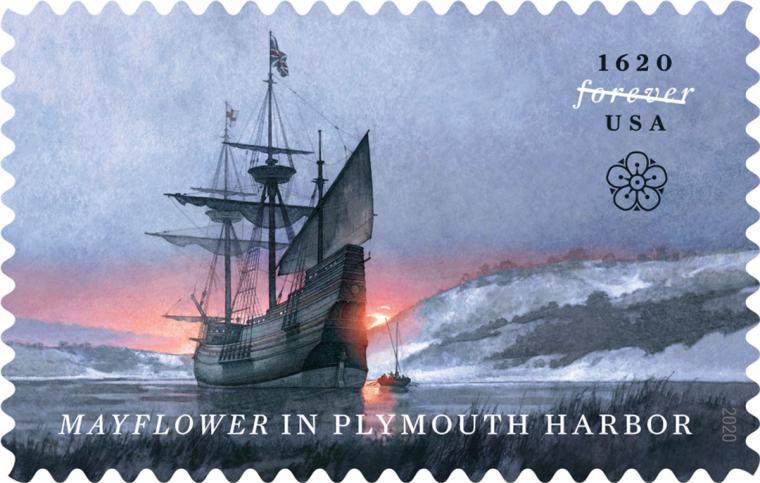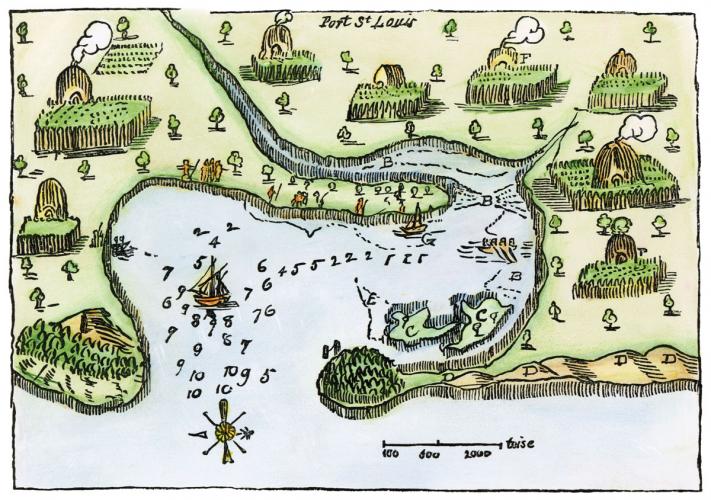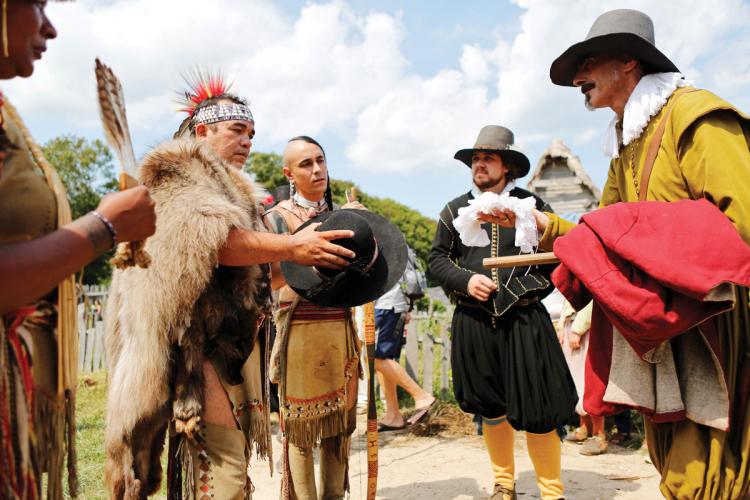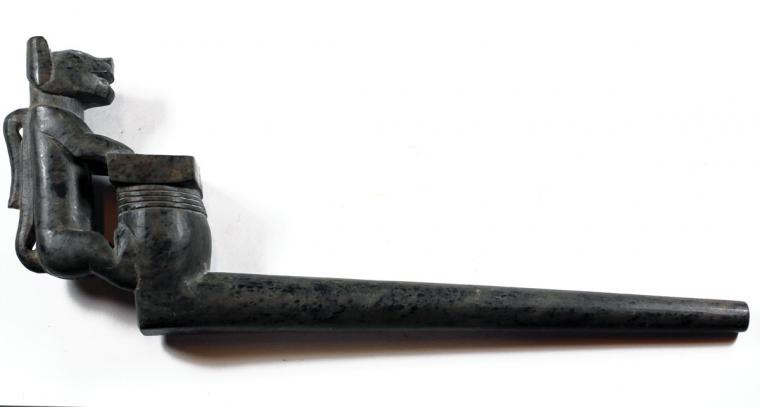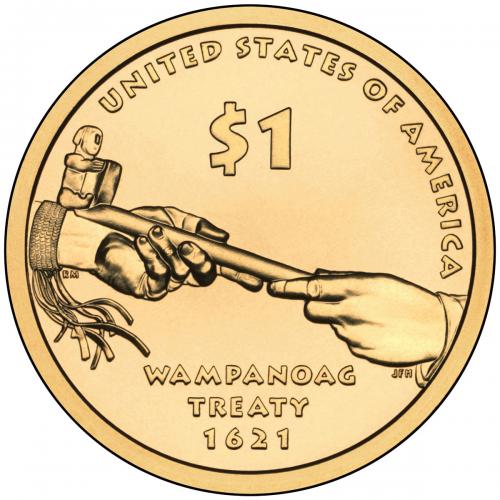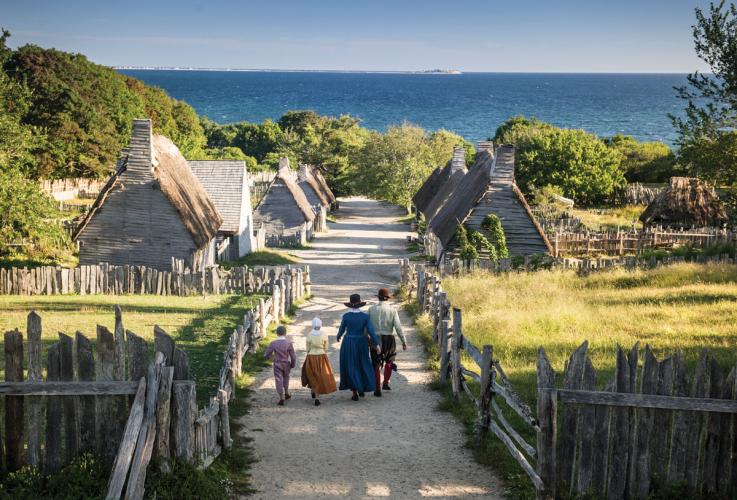Fear and isolation seized the Pilgrims on the Mayflower when they lowered anchor off Cape Cod four centuries ago. William Bradford, one of their leaders, described it eloquently in his “History of Plymouth Colony”: “What could they see but a hideous and desolate wilderness, full of wild beasts and wild men? And what multitudes there might be of them, they knew not.” It is a memorable passage, but it bears witness to inexcusably poor preparation for the expedition and willful refusal to gain advance information about the “wild men” they would encounter. Captain John Smith, who offered to share his experience in the region with the Pilgrims and was disregarded, called it “their intruding ignorance.”
The organizers of this new colony were originally from England. Among the 100 or so passengers were “Separatists” who had sought a religious purity they didn’t find in the state-sanctioned Church of England. They fled England in 1607 and 1608 and settled in the Netherlands, first in Amsterdam and later in the university city of Leiden, where they remained for the next decade. Fearing assimilation of the younger generation and also a resumption of war between the Dutch and Spanish, they planned a settlement in North America. They arrived off Cape Cod on November 11, 1620. After inexplicably wasting five weeks blundering along the cape, they finally located the harbor already known to Captain Smith as Plymouth. There they founded what became the first permanent colony in New England under the name of New Plimoth.
Before their arrival in Plimoth in mid-December, however, the Pilgrims, unlike other European would-be colonists, made no discernable effort to learn about the Native inhabitants of that region. Their failure to do so was part of a pattern of incompetent preparation that directly caused a 50 percent mortality rate in the first winter. The leaders of the Wampanoag tribes had far better information about the English than the Plimoth colonists had about the tribes. In fact, an adviser to the Massasoit, chief of the Wampanoag confederacy, had lived several years in London and had intimate knowledge of the goals and vulnerabilities of its colonial adventurers. The Native leaders very likely felt sure, almost to the point of overconfidence, that they could handle the alien invaders.
Groping in the Cold
The “intruding ignorance” of the Pilgrims started with a basic failure to learn how to navigate Cape Cod’s waters. Contrary to Bradford’s description, the New England coastline was hardly an unknown wilderness. It had been visited regularly by European fishermen and explorers for nearly a century. In a two-decade run-up to the Mayflower’s voyage, European expeditions had mapped and visited both sides of Cape Cod: Bartholomew Gosnold in 1602, Martin Pring in 1603, Samuel de Champlain and the French in 1605 and 1606, the major exploration of Captain John Smith in 1614 and the ill-fated voyage of Thomas Dermer in 1618, in which Dermer tried unsuccessfully to undo some of the damage done by one of John Smith’s subordinates and received a fatal wound from the Natives of Martha’s Vineyard. French and Dutch ships and three vessels of Smith’s fleet had anchored in Plymouth Harbor itself, which received its name from Captain Smith’s 1616 map of New England. Samuel de Champlain drew a recognizable map of the river mouth.
Captain Smith, who paired publication of his 1616 map with an influential exhortation to establish a fishing colony, was eager to return to New England with the Pilgrims but was rudely rebuffed. He complained that when he approached them, he was told that they had his books and didn’t need him. For lack of an experienced leader, the Pilgrims took a fatal misstep at the first moment of their arrival at Cape Cod on November 11. The Mayflower anchored off the tip of the cape, where the water was so shallow the landing party had to wade through three quarters of a mile of freezing muck to reach the beach. The passengers were so pent and eager to reach land that they made this slog repeatedly in the five weeks it took them to find the Plimoth anchorage. Because of the exposure, a large portion caught colds and pneumonia, and at least 40 died as a result. The folk historical image of a landing on Plymouth Rock is so far from the fact that it seems like a psychological expression of repressed guilt.
Fearing the “Wild Men”
Worse than the blundering around Cape Cod Bay was the lack of regard for the Natives who happened to live in the area. The Mayflower passengers sustained themselves in the first weeks by digging up corn stored by the inhabitants for the winter. They then wondered why none of the locals came out to greet them. Their initial policy for first contact was shaped by self-interested prejudice.
Beyond their ignorance of the landscape, the Plimoth settlers seemed to have limited prior knowledge about the “wild men” they would encounter and very little interest in acquiring any. In their discussions at Leiden about relocation was only a slight, ambiguous mention about “converting the Natives” to Christianity, a salient motive for apologists for the Virginia Company colonizers at Jamestown in the preceding decade.
The Pilgrims settled on a location where it seemed easiest to dispossess the original inhabitants. According to Bradford:
“The places they had thoughts on they would land were some of those unpeopled countries of America, which are fruitfull and fit for habitation being devoid of all civill inhabitants, where there are only salvage and brutish people, which range up and down little otherwise than the wild beasts.”
Those who objected to the plan focused on Indian ferocity, with blood-curdling tales of their tortures (apparently gleaned from Champlain). For those settlers who survived the difficult sea voyage, Bradford wrote:
“Should yet be in continual danger of the salvage people, who are cruel, barbarous, and treacherous, most furious in their rage and mercilous where they overcome, not being content only to kill and take away life, but delight to torment men in most bloody manner that may be, flaying men alive with the shells of fishes, cutting off the joints and members of others by piecemeals, and broiling them on the coals, and causing men to eat the collops of their flesh in their sight while they lived.”
Even so, the Leiden congregants finally decided they were more afraid of the Spanish, with whom the 12-year Dutch truce was about to expire.
This passage, usually deleted in schoolbook abridgements of Bradford’s history, contradicts the idea that America was uncontested vacant land, open for superior European exploitation. It also belies the notion that the Pilgrims were benevolent missionaries, anxious to convert American Indians (an impression fostered by their advocates). The fact is that almost none of the new arrivals had any direct experience of Indians, let alone accurate knowledge of them. The Leiden congregants apparently had no access to the groups of American Indians from Mawooshin (Maine), Virginia or even Cape Cod Bay, who had been brought to England beginning in 1605. Several Esopus tribesmen from the lower Hudson River had come back to Holland with Dutch sea captains, but they did not make a good impression, and no records indicate that the Leidenites met them.
Although the Pilgrims had chosen Leiden in part because of its prestigious Leiden University (where their pastor John Robinson had enrolled), it’s not clear whether they received useful information from its learned debates. Even its best-informed geographers still had a lot to learn about American Native ethnology.
What the Indians Knew
This disregard of the Native population stood in sharp contrast to the wide-spread practice of other colonial adventurers. A high priority of early explorers was to kidnap and bring Native leaders back to Europe, where they could be debriefed and trained as interpreters and intermediaries. The George Weymouth expedition to Maine, or Mawooshen, in 1605 forcibly removed five Abenaki. (See “Alien Abductions: The Real Story of the Mawooshen Five,” in American Indian magazine, Fall 2015). The renegade Thomas Hunt, captain of a ship in the Smith fleet in 1614, captured 27 Indians from Cape Cod to sell as slaves in Spain; Smith denounced him furiously for poisoning future relations with Native peoples.
In the two decades before the Mayflower voyage, a significant number of these abductees were living in England and moving back and forth to America. Some of the abductees were guests of principals of various colonial companies. The Mawooshen Five contingent was divided between the households of John Popham, Lord Chief Justice of England and Sir Fernando Gorges, commander of the fort at the original Plymouth in England. Two were sent back home and played a crucial role in the Popham Colony at Sagadahoc in Maine. Two of Hunt’s captives, Tisquantum (Squanto) and Epenow, were eventually redeemed to England and one way or another managed to return home. Tisquantum lived in London with Joseph Slaney, secretary of the Newfoundland Company, and spent time at the fishing colony of Cupid’s Cove in Newfoundland.
Four years before the Mayflower sailed, the Virginia Company brought over a more or less voluntary delegation of Powhatan Indians featuring Rebecca Rolfe, who was also known as Pocahontas. Professor C. B. Rose notes that Rolfe was lodged several hundred yards from the house where Squanto was living. There are no reports stating this, but they had ample opportunity to compare notes about the English. Apparently the Pilgrims, isolated in Leiden, had no access to these Indians or to their intelligence briefings.
Most discussions of these captives dwell on what they could tell the colonizers. But the Indians were intelligent observers who learned a lot in England and brought this knowledge back home. Their insights into English motivations were available to tribal leaders who dealt with colonial settlers, and in some cases the returning captives were the tribal leaders. Their experience and other interactions with explorers shaped Native strategies, for better or worse.
The diplomatic initiative at Plimoth clearly was in the hands of the Indians. At the arrival of the Mayflower, Tisquantum was sojourning with Ousemequin, the Massasoit, or paramount chief, of the Wampanoag, and they carefully managed the first contact with the Pilgrims. Ousemequin had good reasons to support the new settlement. His confederacy had been severely weakened by a plague transmitted by previous European contact. But his regional rivals the Narragansetts had been much less affected, and he wanted the support of English firepower. He could draw on a number of Native precedents, not all of which at this time had ended badly.
During the winter, the Wampanoag watched from a distance as the colony struggled. In mid-March, after several weeks in which the Natives showed themselves more boldly, one of them walked directly into the camp, calling out “welcome” in English. This was Samoset, a Native of Monhegan Island in Maine, who had learned some English from the fishing fleets. After a day of conversation, he promised to return with a more fluent speaker, a Native of Patuxet (the Native name for Plymouth) who had been kidnapped to England. This was Tisquantum, Massasoit’s ace card. This contact led to a top-level conference between the Massasoit himself and the Plimoth governor John Carver and eventually the signing of a formal peace treaty.
Tisquantum attached himself to the English as interpreter and famously taught the settlers how to acclimatize to the new land. (Yes, they did use fish to fertilize corn.) When his ambitions as a culture broker made him non grata to Massassoit, the Wampanoag sent another senior leader, Hobomak, to live next to the colonists as an adviser and minder. For the early years, at least, the Massasoit showed every sign of believing that he had the weak and struggling English colony firmly under control.
On the other side, the Plimoth settlers realized quickly that their survival depended on their usefulness to the surrounding Wampanoag confederacy. They went to some pains to prove themselves reliable allies and learned to live with their neighbors. Their missionary efforts were mainly limited to setting an example of Christian living. This was a notable contrast to the more aggressive efforts of the later Puritan colony at Massachusetts Bay, which differed religiously in subtle but significant ways from the Pilgrims. The Plimoth settlers deserve credit for their acceptance of Native tutelage and their ability to overcome initial fear and ignorance. But the fact is, they had a long way to go.

